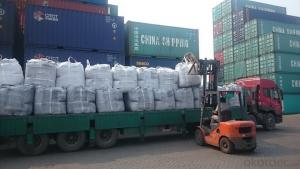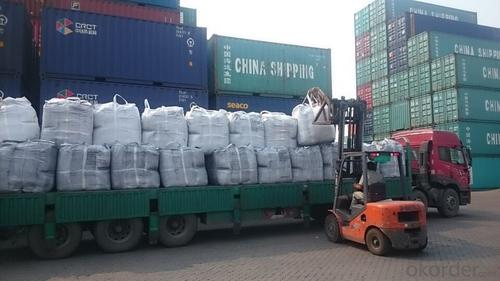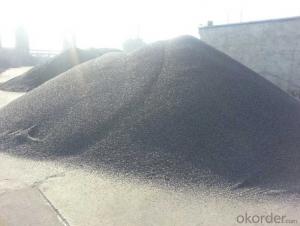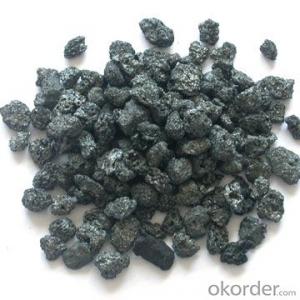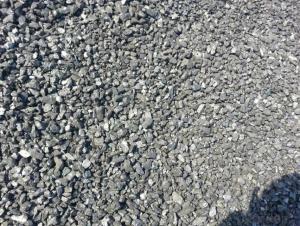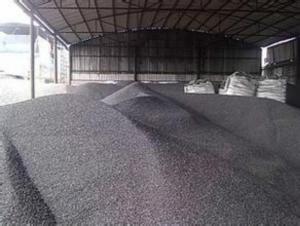GPC with lower N0.03% max in Low VM with smaller size
- Loading Port:
- Tianjin
- Payment Terms:
- TT OR LC
- Min Order Qty:
- 21 m.t.
- Supply Capability:
- 5000 m.t./month
OKorder Service Pledge
OKorder Financial Service
You Might Also Like
Introduction:
GPC has good characteristics with low ash, low resistivity, low sulphur, high carbon and high density. It is the best material for high quality carbon products. It is used as carbon additive in steel industry or fuel.
Features:
1.Our strong team provide you reliable service that make you feel purchasing is more easier
2. We ensure that we can supply capability with competitive price.
3. Work strictly to guarantee product quality,
4. Highest standard of integrity. Guarantee customer's benefit.
5. Supplying Pet Coke, Met coke, Foundry Coke, Carbon Raiser etc.
Specifications:
F.C.% | 95MIN | 94MIN | 93MIN | 92MIN | 90MIN | 85MIN | 84MIN |
ASH % | 4MAX | 5MAX | 6 MAX | 6.5MAX | 8.5MAX | 12MAX | 13MAX |
V.M.% | 1 MAX | 1MAX | 1.0MAX | 1.5MAX | 1.5MAX | 3 MAX | 3 MAX |
SULFUR % | 0.3MAX | 0.3MAX | 0.3MAX | 0.35MAX | 0.35MAX | 0.5MAX | 0.5MAX |
MOISTURE % | 0.5MAX | 0.5MAX | 0.5MAX | 0.5MAX | 0.5MAX | 1MAX | 1MAX |
Pictures
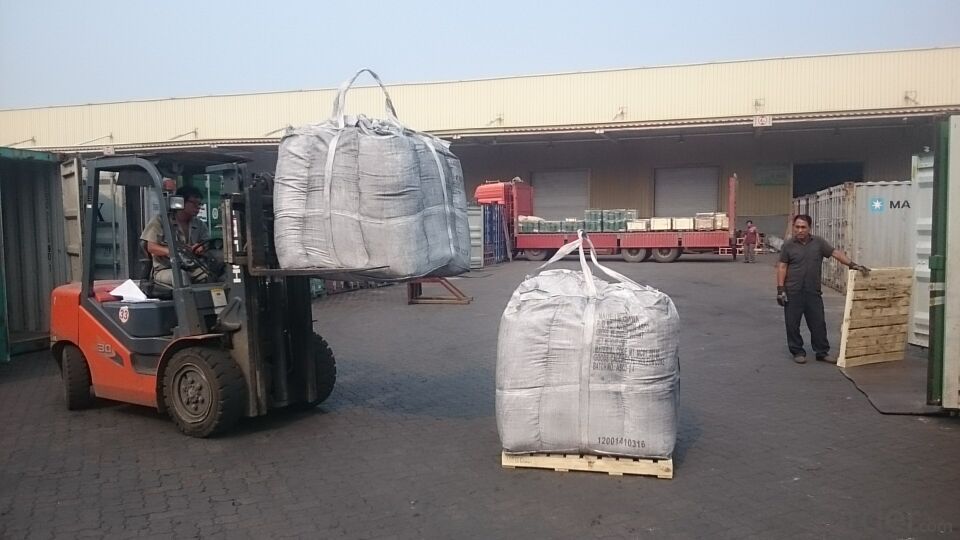
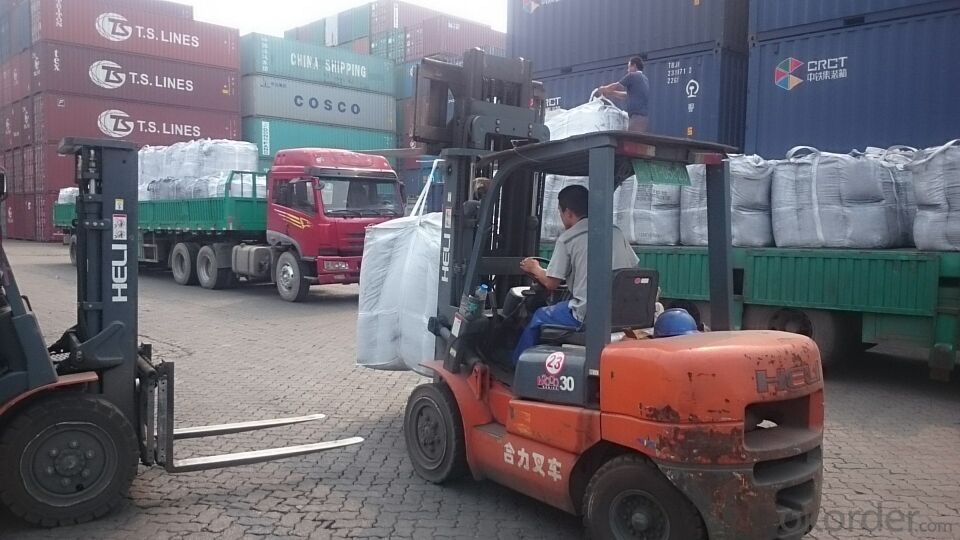
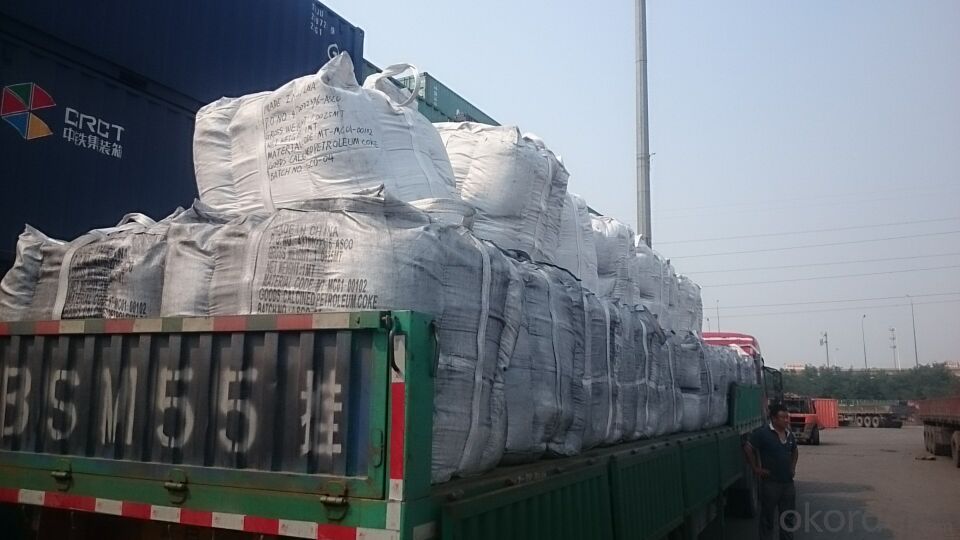
FAQ:
1. Your specification is not very suitable for us.
Please offer us specific indicators by TM or email. We will give you feedback as soon as possible.
2. When can I get the price?
We usually quote within 24 hours after getting your detailed requirements, like size, quantity etc. .
If it is an urgent order, you can call us directly.
3. Do you provide samples?
Yes, samples are available for you to check our quality.
Samples delivery time will be about 3-10 days.
4. What about the lead time for mass product?
The lead time is based on the quantity, about 7-15 days. For graphite product, apply Dual-use items license need about 15-20 working days.
5. What is your terms of delivery?
We accept FOB, CFR, CIF, EXW, etc. You can choose the most convenient way for you. Besides that,
we can also shipping by Air and Express.
6. Product packaging?
We are packed in bulk ship or in ton bag or placing in container or according to your requirements.
7. Notice
please note that the price on Alibaba is a rough price. The actual price will depends on raw materials, exchange rate wage and your order quantity .Hope to cooperation with you, thanks !
- Q: What is the density of carbon?
- The density of carbon depends on its form. The most common form of carbon is graphite, which has a density of 2.267 grams per cubic centimeter (g/cm³). However, another form of carbon called diamond has a much higher density of 3.515 g/cm³. So, it is important to specify which form of carbon we are referring to when discussing its density.
- Q: What are the consequences of increased carbon emissions on coral reefs?
- Increased carbon emissions have severe consequences on coral reefs. One of the major impacts is ocean acidification, which occurs when excess carbon dioxide is absorbed by seawater, leading to a decrease in pH levels. This acidification inhibits the ability of corals to build their calcium carbonate skeletons, making them more vulnerable to erosion and breaking. Additionally, higher levels of carbon dioxide in the atmosphere contribute to global warming, resulting in rising ocean temperatures. This leads to coral bleaching, a phenomenon in which corals expel the symbiotic algae that give them their vibrant colors. Without these algae, corals become stressed, lose their color, and are more susceptible to disease and death. Furthermore, increased carbon emissions contribute to changes in ocean currents and weather patterns, leading to more frequent and intense storms. These storms can physically damage coral reefs, causing further destruction to already vulnerable ecosystems. The consequences of increased carbon emissions on coral reefs are far-reaching and devastating. The decline of coral reefs not only affects the biodiversity of the oceans but also has significant implications for human populations that depend on reefs for food, income, coastal protection, and tourism. It is crucial to reduce carbon emissions and take immediate action to protect and preserve these invaluable ecosystems.
- Q: How is carbon used in the manufacturing of electronics?
- Carbon is used in several ways in the manufacturing of electronics. One of the primary uses of carbon in electronics is as a key component in the production of carbon nanotubes. These nanotubes have exceptional electrical conductivity and mechanical strength, making them ideal for use in various electronic devices. For instance, carbon nanotubes can be used to create high-performance transistors, which are essential components in computer chips. Additionally, carbon is utilized in the manufacturing of batteries for electronic devices. Carbon-based materials, such as graphite, are commonly used as the anode material in lithium-ion batteries. This is because graphite can store and release lithium ions efficiently, allowing for the rechargeable nature of these batteries. Furthermore, carbon is employed in the production of conductive coatings and inks used for printed circuit boards (PCBs). Carbon-based materials, such as carbon black or carbon nanotubes, are added to these coatings and inks to enhance their electrical conductivity. This enables the proper flow of electrical signals throughout the circuitry of electronic devices. In summary, carbon plays a crucial role in the manufacturing of electronics. It is used in the production of carbon nanotubes for high-performance transistors, as anode material in lithium-ion batteries, and in conductive coatings and inks for printed circuit boards. These applications highlight the versatility and importance of carbon in the electronics industry.
- Q: Is there any difference between carbon plate and universal board?
- Generally referred to as "Pu plate" is "hot-rolled ordinary carbon structural steel plate", usually refers to single rolled steel plate (original flat plate). The common grades are: Q235, Q345, SS400, St12 and so on.Usually referred to as "carbon tie plate" refers to the "ordinary carbon structural steel hot-rolled coil", refers to the continuous rolling process with hot rolling mill rolling, finished products are steel coil delivery of ordinary carbon steel plate (coil).
- Q: What are the impacts of carbon emissions on water scarcity?
- Carbon emissions have significant impacts on water scarcity as they contribute to climate change, which alters precipitation patterns and increases the frequency and intensity of droughts. Additionally, carbon emissions from industrial activities and fossil fuel combustion can lead to water pollution, further exacerbating water scarcity by degrading water quality and reducing available resources for human consumption and agriculture.
- Q: What are the consequences of increased carbon emissions on political stability?
- Increased carbon emissions can have significant consequences on political stability. Firstly, it can lead to environmental degradation and natural disasters such as extreme weather events, rising sea levels, and food and water scarcity. These disasters can disrupt economies, displace populations, and create social unrest, ultimately straining political systems. Additionally, carbon-intensive industries often rely on fossil fuels, which can lead to economic disparities and inequality, further fueling social and political tensions. The resulting conflicts over resources, migration, and access to basic needs can undermine political stability and exacerbate existing political challenges. Overall, increased carbon emissions contribute to a range of environmental, economic, and social factors that can erode political stability at local, national, and global levels.
- Q: What are the effects of carbon dioxide on ocean acidity?
- Carbon dioxide (CO2) has a significant impact on ocean acidity, leading to a phenomenon known as ocean acidification. When CO2 is released into the atmosphere through human activities such as burning fossil fuels, it gets absorbed by the oceans. This absorption process triggers a series of chemical reactions that result in the formation of carbonic acid, which lowers the pH of the seawater. The increased concentration of carbonic acid in the oceans disrupts the delicate balance of carbonate ions, which are essential for the formation of calcium carbonate. Many marine organisms, including coral reefs, shellfish, and plankton, rely on calcium carbonate to build their shells and skeletons. As the ocean becomes more acidic, the concentration of carbonate ions decreases, making it increasingly difficult for these organisms to form and maintain their protective structures. Ocean acidification poses a significant threat to marine ecosystems and biodiversity. Coral reefs, for example, are particularly vulnerable to the effects of acidification. As the acidity increases, the coral's ability to build and maintain its calcium carbonate structure is compromised, leading to the bleaching and eventual death of the reef. This loss of coral reefs has severe consequences for the countless species that depend on these ecosystems for food, shelter, and reproduction. Furthermore, ocean acidification also affects other marine organisms, such as shellfish and plankton. Shellfish, including oysters, clams, and mussels, depend on calcium carbonate to form their shells. As the acidity rises, the availability of carbonate ions decreases, making it harder for these organisms to build their protective shells. This, in turn, can result in reduced populations of shellfish, impacting not only the organisms themselves but also the industries and communities that rely on them for economic and cultural reasons. Plankton, which are the foundation of the marine food web, are also susceptible to the effects of increased ocean acidity. Many plankton species have calcium carbonate structures that provide them with buoyancy and protection. As the acidity rises, these structures weaken, making it harder for plankton to survive and reproduce. This disruption in the plankton community can have far-reaching consequences for the entire marine food chain, impacting fish, marine mammals, and ultimately, humans who rely on seafood as a primary source of protein. In conclusion, the effects of carbon dioxide on ocean acidity are significant and alarming. Ocean acidification threatens the health and stability of marine ecosystems, impacting vital organisms like coral reefs, shellfish, and plankton. Understanding and addressing this issue is crucial for the long-term health of our oceans and the countless species that depend on them.
- Q: How is carbon used in the water treatment process?
- The water treatment process employs carbon in various ways. Activated carbon, which possesses a high porosity and a large surface area, is commonly utilized. This enables it to efficiently adsorb and eliminate impurities from water. Water treatment facilities often employ activated carbon in the form of granules, pellets, or blocks. It can be introduced at different stages of the treatment process. For instance, during the initial filtration stage, activated carbon can be utilized to eliminate particles that can affect the water's taste and smell, such as sediment and chlorine byproducts. Moreover, activated carbon is highly effective in eliminating organic compounds, including pesticides, herbicides, and industrial chemicals, that may exist in the water. The consumption of these compounds can be detrimental to human health, thus the use of activated carbon ensures the safety of drinking water. Another method in which carbon is employed in water treatment is through carbonation. This procedure involves injecting carbon dioxide gas into the water, which aids in reducing its pH level. Carbonation is commonly employed in the treatment of alkaline water sources, as it neutralizes the water and makes it more suitable for consumption. In conclusion, carbon plays a vital role in the water treatment process as it efficiently removes impurities and enhances the quality of drinking water. Its ability to adsorb makes it an invaluable tool in guaranteeing the safety and healthiness of water.
- Q: How does carbon affect the formation of toxic algal blooms?
- Toxic algal blooms can be influenced by carbon in both direct and indirect ways. Eutrophication is one direct effect, where carbon, in the form of organic matter, enters water bodies from various human activities. This excess carbon acts as a nutrient for algae, promoting their rapid growth and leading to algal blooms. Another direct effect is the impact of carbon on the composition of algal communities. Certain algae species, known as harmful algal blooms (HABs), can produce toxins that are harmful to aquatic organisms, humans, and animals. The concentration of carbon can influence the growth and dominance of HABs, creating favorable conditions for their development. Furthermore, carbon affects the chemistry of the water, including its pH levels. Changes in pH can significantly affect the physiology and behavior of algae. Some toxic algae species are more tolerant of low pH levels, which can be worsened by increased carbon dioxide levels in the water. This creates an environment that favors the growth of harmful algal blooms. Indirectly, carbon can also impact the temperature and nutrient dynamics in water bodies. Climate change, driven by increased carbon emissions, can result in warmer temperatures, which stimulate algal growth. Additionally, changes in nutrient availability due to carbon-induced alterations in the water cycle can favor the development of toxic algal blooms. In conclusion, carbon plays a significant role in the formation of toxic algal blooms through eutrophication, changes in algal community composition, alterations in water chemistry, and indirect impacts on temperature and nutrient dynamics. Understanding these relationships is crucial for developing strategies to mitigate the occurrence and impact of harmful algal blooms.
- Q: The difference between double offset paper and carbon free printing paper
- Double offset paper is a printing paper. It is a higher quality printing paper. The contrast, flexibility and surface strength have higher requirements, and the acidity and basicity of the paper should be close to neutral or weak alkaline. Previously called Dowling, now some small mills to offset for the very low, the price is low...
Send your message to us
GPC with lower N0.03% max in Low VM with smaller size
- Loading Port:
- Tianjin
- Payment Terms:
- TT OR LC
- Min Order Qty:
- 21 m.t.
- Supply Capability:
- 5000 m.t./month
OKorder Service Pledge
OKorder Financial Service
Similar products
Hot products
Hot Searches
